It's difficult to find a starting point to describe what kind of game Pacific Drive is, but it always makes me happy when a title manages to achieve that. It's an automotive roguelike, a postapocalyptic road trip simulator, and a love letter to the Pacific Northwest and to old station wagons across the country. It's a game that takes itself seriously in its portrayal of a fictional (and rather fantastic) man-made disaster that made a big chunk of the Olympic Peninsula uninhabitable. At the same time, it doesn't demand that the player treat it as seriously, which is a trap that a whole lot of postapocalyptic games wander into.
As the story goes, back in 1947, the area became the proving grounds for LIM technology. This technology was promised to be one of the next big leaps forward, but for all the promises of utopian advancements, things took a turn a few years later. In 1955, something happened in the area that caused the government to build massive walls to contain the area that's now known as the Olympic Exclusion Zone. Over the next three decades, the Zone grew two more times, with successive rings of the massive walls enveloping ever-larger areas. Beyond stories of overnight evacuations and rumors of unnatural encounters, it was never disclosed what really happened within the Zone.
You start the game as a nameless driver, tasked with driving a shipment carried within your station wagon. Your route along the highway snakes through the undulating, heavily forested landscape, but it's where the route runs along one of the Zone's walls where things take a sudden turn. After dodging some unnatural hazards that begin to pop up, your car dies and then gets sucked into a massive anomaly. You awaken within the Zone, with parts of your old car spinning weightlessly in the air around you. After making your way forward a bit, you find it: the remnant.
You see, remnants have a storied history in the Zone and can take many forms, from a paint bucket filled with impossible colors to more mundane items. They're sort of the superheroes of inanimate objects, and not every superpower is useful. The remnant you find is a beat-up but beautiful old station wagon that still runs and drives, despite the obvious decay around it. It could be a unicorn of postapocalyptic lore or simply a good means to cover some ground, but either way, you hop into the vehicle and go to the garage.
You see, in the Zone, the landscape can change. Where a series of houses can be found during one drive, the next time, it might be nothing but trees. The garage exists in a place of perpetual stability, so it serves as your home base, and that's where you can store supplies and fix the car before heading out on your next trip into the Zone. The relative instability of the majority of the Zone also impacts the game; the way the road snakes through the area and the buildings that are present can be different every time.
This brings you to the real gameplay loop: preparing your car, striking off into the Zone, gathering enough supplies to make it worthwhile, and then returning before the encroaching instability of the Zone rearranges your molecules. At first, you have a station wagon protected by crude panels and doors and some summer tires that do poorly any time you leave a paved surface. Hopefully, you remembered to top off the gas tank before heading out.
Pacific Drive isn't a game where you can avoid all of the dangers and hazards, and as you get deeper into the Zone, you often have to apologize to the car instead of trying to keep it from harm. Even driving over uneven terrain can cause you to damage some of the bodywork, but obviously the bumper and some nearby pieces will take some damage if you accidentally ram something. The interior of the car has a handy display that shows the status of each car part, and the part changes from green to red as it takes on more damage.
Parts can also be affected by status effects. The windows in the doors or the windshield can become cracked. Tires can become flat, or the wheels can become loose, or parts might become unnaturally charged with electrical energy. All of these affects can be fixed with one of the various kits (sealing, mechanical, or electrical), assuming you had the foresight to bring some just in case they were needed. You can limp along without fixes, but loose wheels can come off and need to be manually reattached — and they won't exactly wait until an opportune time.
While you're out on excursions, you'll gather as many resources as possible. These all fall into basic types — rubber, plastic, scrap metal, etc. — which are also the base components in most of the game's crafting. You have a personal inventory in the form of a backpack, but a lot of its space is usually taken up with various tools. Instead, you'll utilize the cargo capacity of the car to bring loot back to the garage. At the beginning of the game, you have a relatively small set of cardboard boxes to keep things, but you can upgrade its capacity over time.
Before you set out on a run, you can choose a destination junction (think "map") that you want to reach, and you can also get a feel for what the junctions might contain and what kinds of hazards you might have to deal with. In every junction, you can find energy nodes that serve a dual purpose. A long-term use of that energy is to unlock new crafting recipes at the garage. However, once you store the nodes in your car, it also has the effect of partially filling a bar that sits on the right side of the map display in the passenger seat. As long as you have enough energy, you can leave the junction and return home by selecting an exit gate on the map.
However, it's not quite that simple. You have to be a minimum distance away from such a gate to activate it, and as soon as you do, the stability of the junction begins to collapse. A giant orange pillar of light makes your destination unmistakable, but you'll be hurtling toward it given the two rings that are rapidly closing on it on the map. It's sort of like the ring closing in a battle royale game, with the first ring making it so your car takes damage until you exit the junction. Either way, you need to reach the gate before the red zone reaches you, which is a guaranteed way to catastrophically end the run.
Back at the garage, you'll spend some time repairing busted parts, which is as easy as slapping some craftable repair putty on parts or crafting and using a blowtorch on them. All parts wear out eventually, so over time, you'll see that white X as their status symbol and know that it's time to swap the worn-out part with a replacement. You can also paint the car chassis and nearly every part, or you can apply a decal pack to the parts. You can also swap out the steering wheel, dashboard toy, shifter, hood ornament, and the little thing that adorns the top of your antenna for various cosmetic options.
The neat part comes as you unlock more upgrades and can really customize the car. Fully upgraded, the car has two back seat slots, two roof slots, and four side slots to use in a variety of ways. The roof and side slots can both be used to expand storage, fuel, or battery capacity, but the side slots can be used in various ways to generate energy while on a run or other utility options. The rear seats can expand fuel or the battery and can add active and passive abilities, such as a device that automatically puts the car in park when you get out or lets your car spring into the air to avoid obstacles.
The car can also develop quirks over time, and you can use the diagnostic station at the garage to resolve them. Every quirk boils down to "If (this part) is (doing this), then (this other part) (does this)". Sometimes you'll get a harmless quirk, like the wipers working faster when the wheel is turned to the right. Other quirks can be harmful, such as the headlights dimming when the wheel is turned. You can also end up with downright beneficial quirks, such as having less fuel consumption while the headlights are on. The quirks aren't always the most realistic, but at the same time, I've personally owned a car where one of the headlights didn't work until you elbow-dropped the hood, so I can't say things are that far off.
Pacific Drive can be a bit spooky at times, but it's never scary. There aren't any creatures in the woods waiting to maul you, and while there are no shortage of things that can harm you while on foot, there are no jump-scares to be found, even when you're in the pitch-black night during a downpour. If anything, there will be times when you'll mentally exclaim, "Hurt me all you want; just leave the poor car alone!"
Those woods, though. If Pacific Drive is anything, it also feels like a love letter to the Pacific Northwest in its own twisted way. The dense woods and undulating hills can be quite beautiful in an often-warped way, and even the soundtrack features a slew of artists that hail from the area but come from a variety of styles. It should be no shock that the team at Ironwood Studios is based out of Seattle, so I can only imagine some of the things that are in the game were inspired by them basically looking out their window. It really does rain a lot in game, and I'll remember barreling down an otherwise normal highway during a nighttime rainstorm in this game just as well as I'll remember driving that same car through some of the later, warped landscapes.
When you get down to it, Pacific Drive is a quietly brilliant game. There's nothing that comes to mind that is like it, and it's an outwardly simple concept that also has a variety of layers. While out on a run, you deftly drive around anomalies and sometimes escape a junction with a tattered car by the skin of your teeth. Other times, you're outfitting your car in the garage while the jukebox is playing, carefully considering what to bring with you and which parts you should have on the car. This game is exactly what I had hoped it would be when I initially heard about it, and it's been a long time since I've played something so boldly different.
Score: 9.0/10
Reviewed on: AMD Ryzen 7 3700X, 32 GB RAM, NVidia RTX 4070 Ti
More articles about Pacific Drive


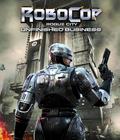
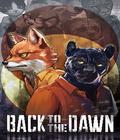

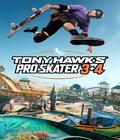
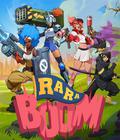

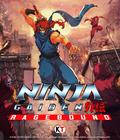
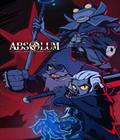

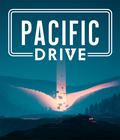 Pacific Drive is a run-based, first-person driving survival game set in the pacific northwest region of the United States.
Pacific Drive is a run-based, first-person driving survival game set in the pacific northwest region of the United States.




























